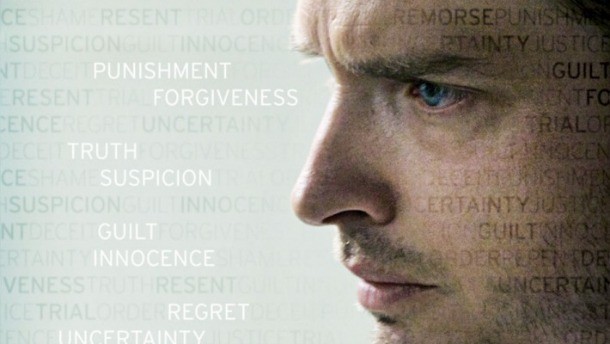Please support Game Informer. Print magazine subscriptions are less than $2 per issue
Rectify Made The Best Use Of A Video Game I've Seen On Television

With rare exceptions, I can't stand it when television shows depict video games. We've all seen it: people doing wild couch gyrations with outdated controllers to playing a first-person shooter with Space Invaders sound effects. Or, perhaps there's terrible looking fake GTA that led a kid down the path to murder. Though it's been getting better, film and television's treatment of video games as props or plot devices has been embarrassing.
There has been progress. As more gamers gain positions of power in Hollywood, the industry is beginning to treat games as cultural touchstones that are a part of our shared pop culture in the same way as literature, film, and music. On Netflix's House of Cards, Kevin Spacey's character plays shooters to blow off steam without being made to seem like a fool. The animated hit Wreck-It Ralph used '80s arcade games as a jumping-off point for a well-told story that used many clever game references.
Still, it's hard for me to point to a show where I found the use of a video game really affecting – until last night. I've been watching the Sundance Channel's amazing drama Rectify on Netflix Instant. It's one of the better shows I've watched in recent years – deliberately paced and subtle.
Rectify tells the story of Daniel Holden, who was convicted in his teens of murdering his 16-year-old girlfriend. He's spent his entire adult life – 19 years – on death row for the crime. Suddenly, he's cleared on new DNA evidence and must return to the outside world and his hometown of Paulie, Georgia.
While there are multiple intersecting plot lines in the show, many relating to the original murder and the subsequent court case, the real core of Rectify is Daniel's tentative steps back into society. Actor Aden Young plays Daniel brilliantly; he often wanders through the day in a daze, an alien on Earth after 19 years spent in a concrete white box.
The world has moved in 19 years, but Daniel has stepped out of a time machine from the early '90s. Cell phones, DVDs, even a protein bar at the convenience store are all completely new to him. This gulf is illustrated in a couple great scenes in episode three of the the show's first season – both of which feature video games.
Feeling overwhelmed by his reintegration into daily life, Daniel spends his days holed up in his room. He decides to venture up into the attic of his childhood home. There he finds some of his old clothes. He puts on a vintage '90s outfit – baggy pants, baseball hat, and flannel shirt. He opens a trunk that's full of some of his old belongings; at the top is a Sega Genesis, the system that would have been at its peak when he was sent to prison. He picks it up, perhaps trying to imagine the time that has passed since he last played. He also finds a Walkman and some old tapes. He puts it on and listens to some old mixtapes – we leave him dancing in the attic to old '90s alternative rock hits by Cracker and Stone Temple Pilots.
For that day at least, Daniel seems to want to sink into the comfort of his lost adolescence. At the end of the episode, he's back in his room again, playing Sonic the Hedgehog*, completely alone. For a moment, he's in his teens again, a kid with all the time in the world to kill. However, at level end, we see the realization that this escape is only temporary cross his face. It's a touching moment, and shows that games in television and film don't have to be a joke or a sensational gimmick. Let's hope more directors and writers take note.
*I do have to knock the show a bit for having him play Sonic with an an arcade stick peripheral, but I'm inclined to be charitable in this case.










